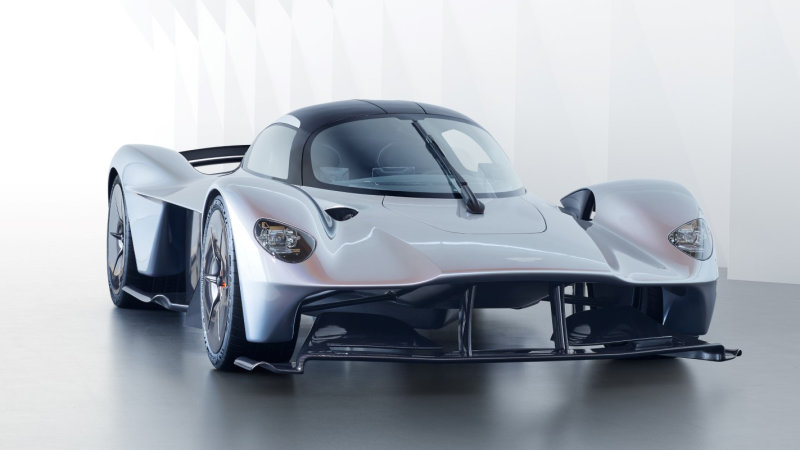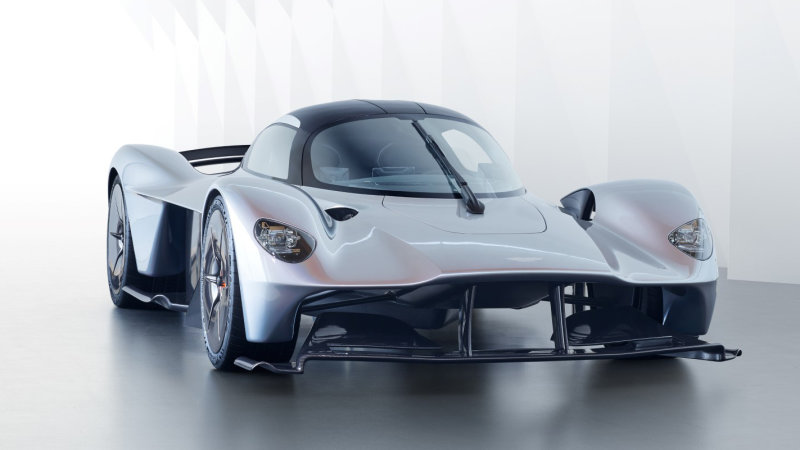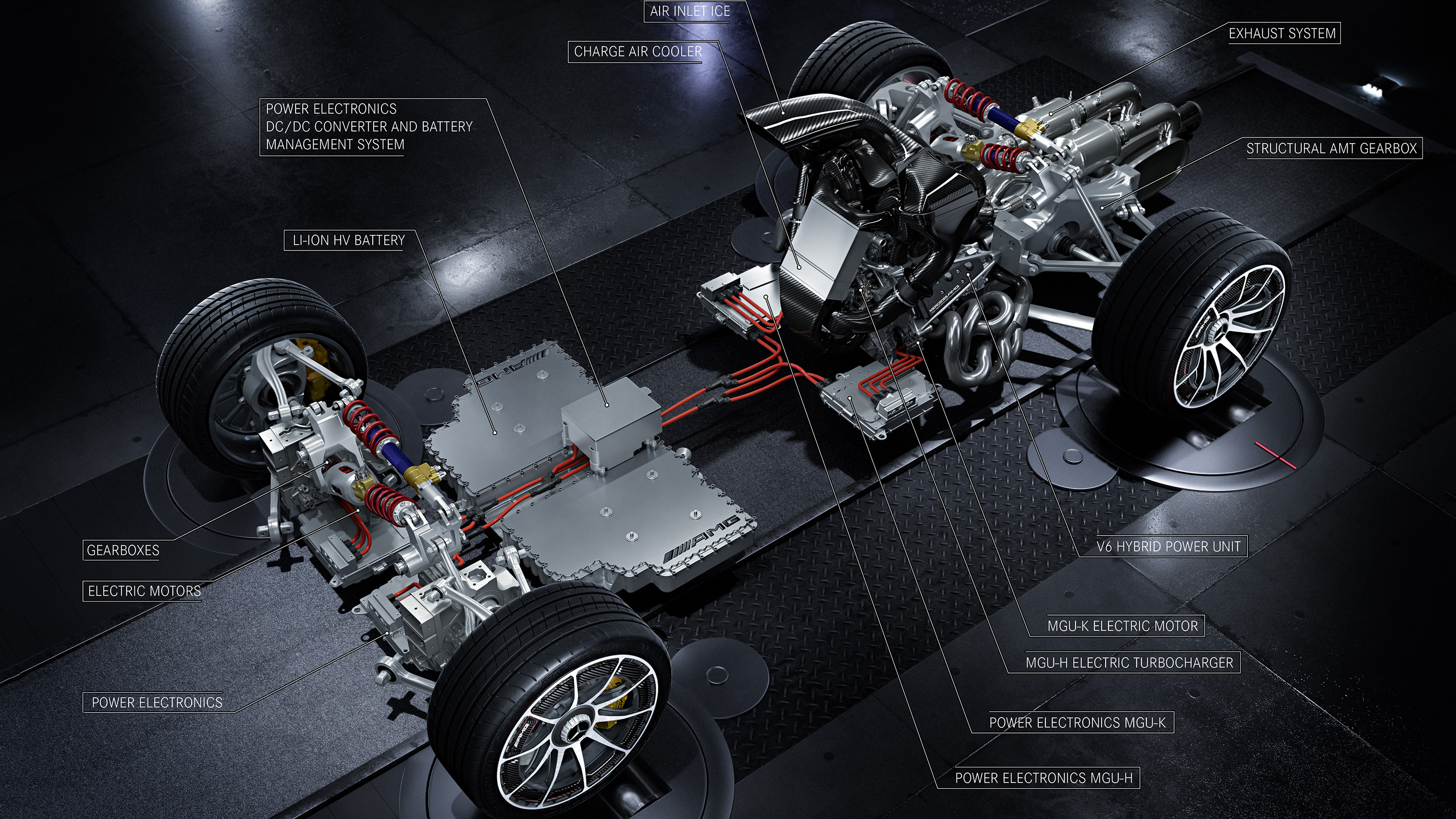Aston Martin Valkyrie goes to extreme lengths for lightweight and aerodynamics
Aston Martin has been teasing the Valkyrie hypercar off and on the last couple of years, first as the RB-001, and now with its official name, and it has just released images and information of the most production-ready variant yet. The exterior has been updated with actual headlights and tailights, along with some aerodynamic tweaks. The car now has a fully finished interior with steering wheel, seats, and instrumentation.
Starting from the outside, the greenhouse is much more upright, likely to make the cabin more comfortable for occupants. The flanks have been generally simplified, too, with the exception of an aggressive rendition of Aston’s trademark vents worked into the front fenders. According to Aston, these vents also help increase front-end downforce. On top of the car is a prominent air scoop that was absent on the old concept. We can also see how vast the Venturi tunnels are that run the full length of the car, and around the passenger and engine compartments. The wheels also now feature full covers, ostensibly for additional aerodynamic improvements.
One of the most noticeable changes are the inclusions of head and taillights, and they are also part of some extreme weight savings. The headlights are apparently 30- to 40-percent lighter than those found on any other existing Aston Martin. Though there aren’t particularly exciting details about the taillights, the third brake light is pretty incredible. The company claims its the smallest ever made, and we’re inclined to believe it since the light is less than a quarter-inch wide and just under four tenths of an inch tall. On top of all this, Aston decided that a normal company badge was also too heavy, and a sticker wasn’t quality enough, so it laser-etched a badge made of aluminum that’s just 70 microns thick. For comparison, a human hair is about 100 microns thick.
The interior looks like a carbon-fiber pod from the future. The seats are bolted directly to the floor, and passengers sit reclined with their feet slightly raised, which Aston says is like in F1 and Le Mans prototype race cars. Occupants will also be secured by standard four-point harnesses with a six-point version as an option. The steering wheel features every single control, along with a center display, and is removable. All of the important driving information will be displayed on the wheel screen as well as a center screen on the dash. The Valkyrie will also realized the dream of car designers the world over by really using cameras and screens as a replacement for mirrors.
Aston Martin also says that there may be some other tweaks to the car down the road. However, it said that most of the body is structural, so you won’t be seeing any particularly drastic adjustments. We can’t wait to see more about this $3 million limited production hypercar in the future.
Related Video:






